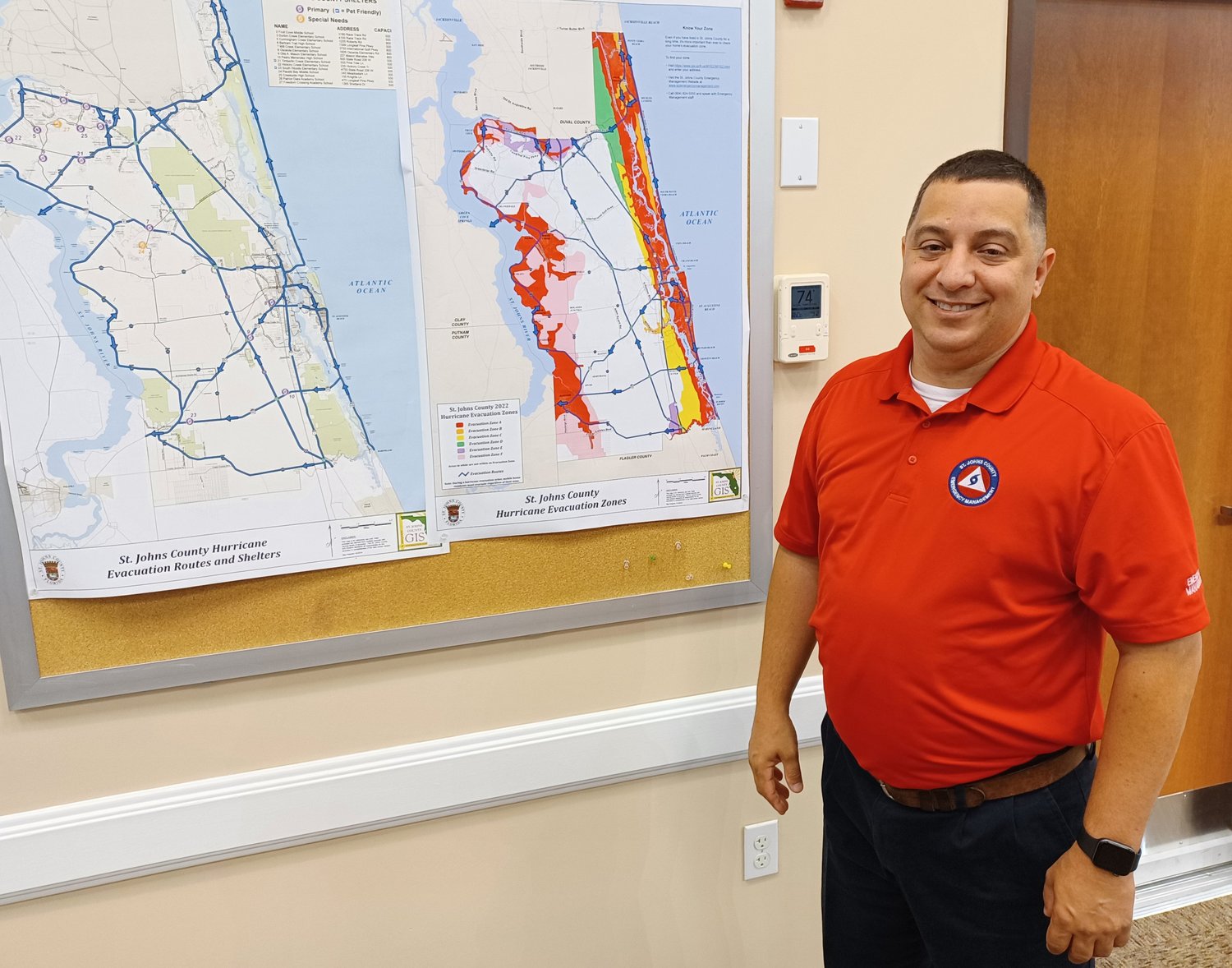New zone map issued for 2022 hurricane season
The 2022 Atlantic Hurricane Season officially began Wednesday, June 1, and now is the time for area residents to prepare.
To that end, St. Johns County Department of Emergency Management is deploying its number one tool for protecting people and property should a storm hit: information. And while a great deal of it may sound familiar to anyone who has lived here for at least a few years, it’s important not to grow complacent.
“If you’re new to the county, or even if you’ve been here for a while, it’s always good to refresh,” said Joseph Giammanco, emergency management director for St. Johns County.
Perhaps the biggest change this year is a new configuration of evacuation zones. Between 2014 and 2021, the only A zones in northern St. Johns County were along the ocean, Guana Lake and the Intracoastal Waterway. Most of Ponte Vedra Beach and Palm Valley were B zones.
Now, nearly all properties in that area are in zone A, typically the most vulnerable in a named storm.
The change came after the National Hurricane Center updated its information on storm surge modeling, the first time it had done so since 2013. The county then turned that information into a map of evacuation zones.
“One of the key factors is elevation, because what we’re looking for in hurricane evacuation zones is the areas that are impacted by storm surge,” Giammanco said.
Though there are islands of zone B in the Ponte Vedra area, residents living there are also vulnerable. First responders will not be sent to cross zone A to get to zone B, so no one will come if those residents need help.
For that reason, zones A and B typically evacuate together.
Residents should become familiar with their zones, evacuation routes and the location of evacuation shelters. You can find your zone by going to the department’s website, sjcemergencymanagement.com. Click the My Evacuation Zone icon on the right side of the page. Then, in the space provided, enter your address.
In addition, residents should start putting together a plan should they need to evacuate. One of the best places to find out what needs done is the department’s website. It’s a treasury of important information for county residents.
“Go to our website and look at our preparation guides,” Giammanco said.
Anyone who encounters difficulty in navigating the website can get help from a live person by calling 904-824-5550.
Giammanco also recommended looking into homeowner’s and flood insurance, start collecting important documents you don’t want to leave behind if you must leave quickly, arrange to have several days’ worth of your prescription medication handy.
Another important action some residents will need to take is registering for a spot in one of the special needs shelters in case it is needed. Don’t wait until a storm is coming.
“We don’t want people calling us five minutes before the storm comes, trying to figure out what to do,” Giammanco said. “That’s way too late.”
It’s also important to keep up to date on information. The local media is one of the best ways to get up-to-the-minute reports, and when warranted, the Emergency Management department will do press conferences. Registering with the Alert St. Johns system via the department’s website is also helpful. And people can follow the department on its Facebook page, as well.
For naysayers who tend to ignore warnings due to some past threat that failed to materialize, Giammanco has a message.
“Don’t take it lightly,” he said. “If you get an order to evacuate, you need to go, because we’re looking out for your safety.”







